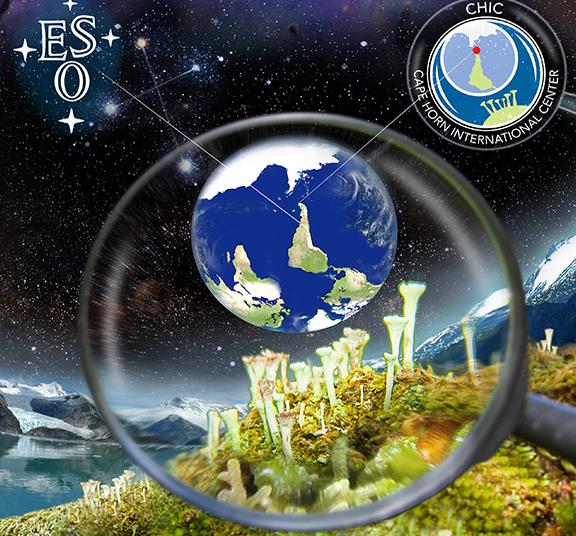Chile is a land drawn with the rhythm of nature itself. It is a natural laboratory that invites us to look up into the macrocosm and down into the microcosm. At both extremes of this long and narrow country, science activities have a major global impact. Today, over 50 percent of the world’s astronomical observations use the telescopes of the European Southern Observatory (ESO) and other institutions installed in the Atacama Desert in northern Chile. Complementarily, at its southern end Chile established the Cape Horn International Center for Global Change Studies and Biocultural Conservation (CHIC) to investigate the microcosms, from the largest organism, planet Earth, to the smallest ones. CHIC explores diverse forms of knowledge and values to understand and protect the biosphere in the context of global socio-environmental change. This virtual exhibition enhances the integration of the sciences, arts, and humanities through a novel partnership with the Rachel Carson Center for Environment and Society, inviting visitors to be enchanted across the multiple scales of the cosmos.
Rozzi, Ricardo, Carolina Castro Jorquera, Luis Chavarría, Shaun Russell, Bernard Goffinet, Miguel Garcia, Kelli Moses, Tamara Contador, Francisca Massardo, Bruno Leibundgut, Teresa Paneque Carreño, Alain Smette, Itziar de Gregorio-Monsalvo, and Alejandra Tauro. “From Hand Lenses to Telescopes: Exploring the Microcosm and Macrocosm in Chile’s Biocultural Laboratories.” Environment & Society Portal, Virtual Exhibitions 2023, no. 1. Rachel Carson Center for Environment and Society. doi.org/10.5282/rcc/9506.
ISSN 2198-7696 Environment & Society Portal, Virtual Exhibitions










